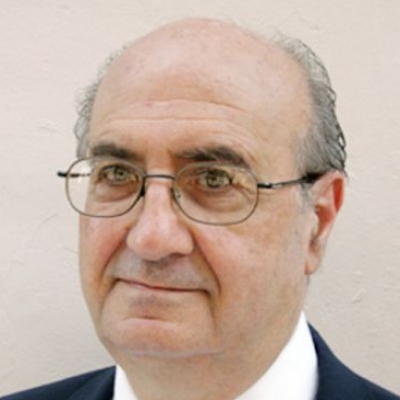Alzheimer’s: An Artistic View
Syrian-American photographer Bachar Azmeh gives his artistic interpretation of what happens in the brains of those affected by Alzheimer’s disease.
June 22, 2019

Alzheimer’s disease is the most common cause of age-related dementias in the world.
In the United States alone, there are almost 6 million people diagnosed with this disease. At a global level, there were almost 50 million people affected by this disease in 2017, and that number is expected to reach 131.5 million in 2050.
The impact of this increase on people’s quality of life and in the countries’ economies will be devastating, particularly because much of the increase will be in developing countries. In the United States, it is estimated that it will cost the government $1.1 trillion in health care expenses by 2050.
Alzheimer’s strikes all kinds of people — it makes no distinctions. Perhaps the most famous patient was the late U.S. president Ronald Reagan.
When in 1994 he was diagnosed with Alzheimer’s disease, he wrote an immensely courageous letter to the American people, where he wrote, “My Fellow Americans, I have recently been told that I am one of the millions of Americans who will be afflicted with Alzheimer’s Disease,” and which he closed saying, “I now begin the journey that will lead me into the sunset of my life.”
What happens in the brain
What happens in the brains of those affected by the disease? The answer can be found through the use of modern techniques.
In the past decade, medical imaging has improved considerably, and experts have been able to document the changes taking place in people’s brains. We now know that memory loss and other cognitive problems are accompanied by anatomical changes in the brain.
The accumulation of two types of proteins called beta-amyloid and tau is a distinctive feature of this disease. While beta-amyloid tends to accumulate outside of the nerve cells where it forms plaques, tau accumulates inside the brain cells and bunch, leading to what experts call “tangles.”
It is the accumulation of these plaques and tangles that leads to the death of nerve cells, which eventually causes dementia.
From medicine to art
I asked a friend of mine, noted Syrian-American photographer Bachar Azmeh, for his artistic interpretation of this disease. The three photographs below show it.
According to Azmeh, the first photograph shows the senile plaques, with random interconnecting lines, neurons and deformed cells that will manifest as memory loss.
The second photograph has an almost Dalian (after Salvador Dali) vision, with red creeping spiders showing a surrealistic dimension of Alzheimer’s.
Because the disease tends to progress slowly in most people, the third photograph, that Azmeh calls “colorful winter confusion,” demonstrates the time-dimension evolution of Alzheimer’s disease.
Fortunately, some progress is being done on fighting this disease, and these artistic photographs will be part of its history.
Photograph 1
Photograph 2
Photograph 3
Takeaways
Alzheimer’s is the most common cause of age-related dementias. At a global level, there are almost 50 million people affected by it.
Alzheimer’s disease strikes all kinds of people -- it makes no distinctions.
What happens in the brains of those affected by Alzheimer’s disease? The answer can be found through the use of modern techniques.
Syrian-American photographer Bachar Azmeh gives his artistic interpretation of what happens in the brains of those affected by Alzheimer’s disease.
Fortunately, some progress is being made fighting Alzheimer’s disease, and these artistic photographs will be part of its history.




